Abstract
Behavioral economics is often conceived as the study of anomalies superimposed on a rational system. As research has progressed, anomalies have multiplied until little is left of rationality. Another conception of behavioral economics is based on the axiom that value is always maximized. It incorporates so-called anomalies either as conflicts between temporal patterns of behavior and the individual acts comprising those patterns or as outcomes of nonexponential time discounting. This second conception of behavioral economics is both empirically based and internally consistent.
Full text
PDF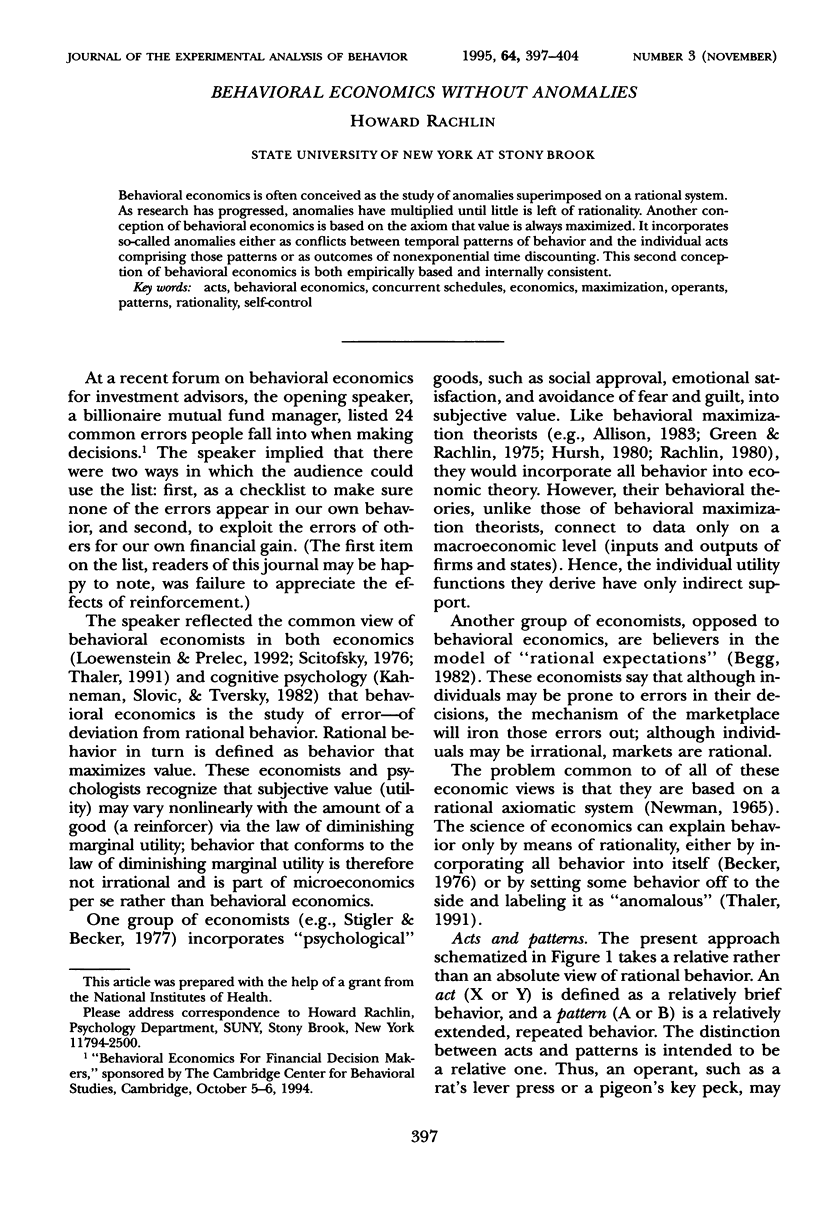

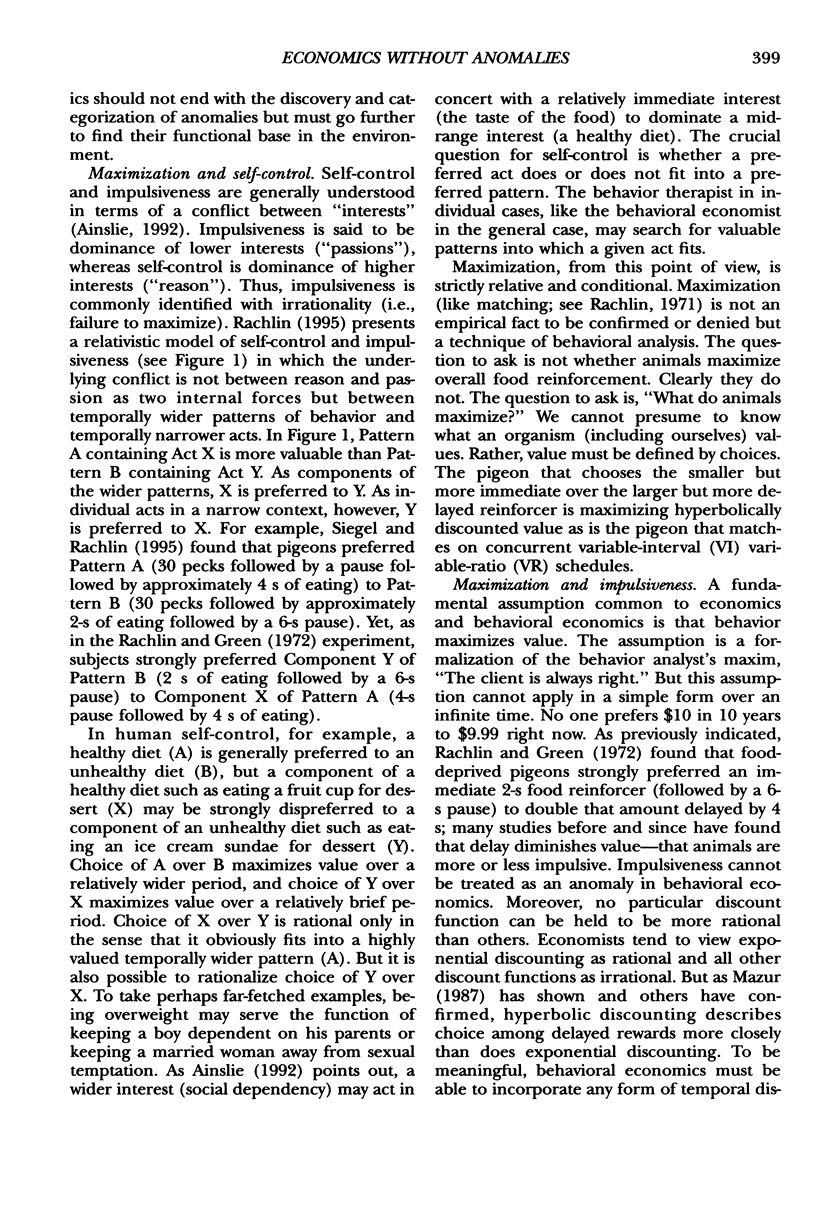
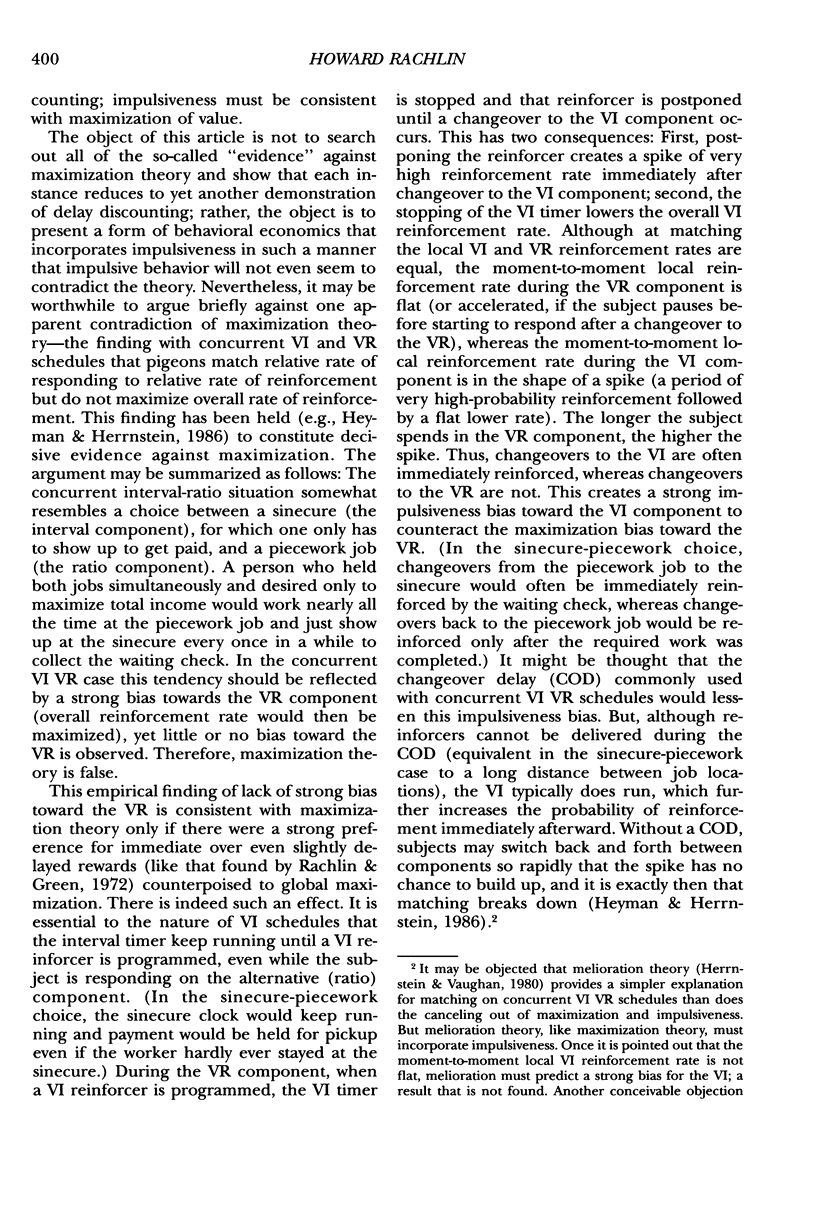

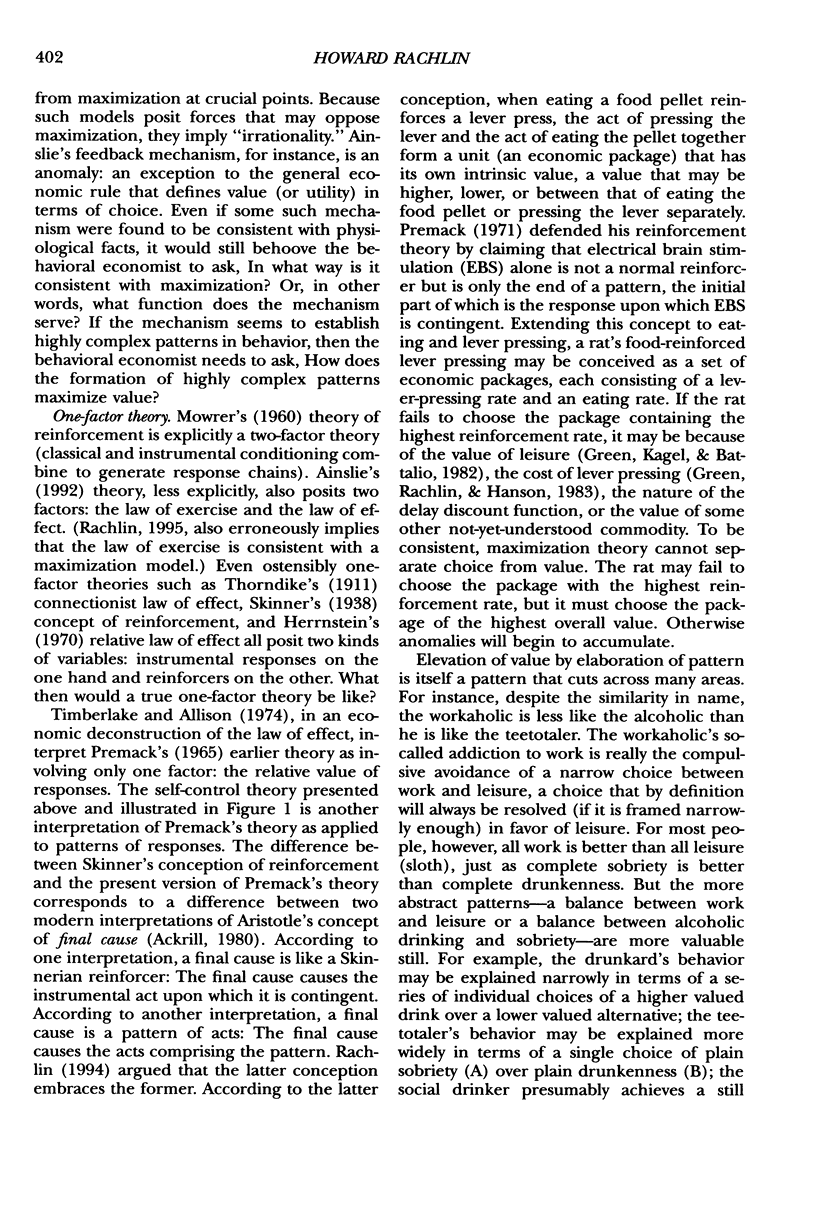
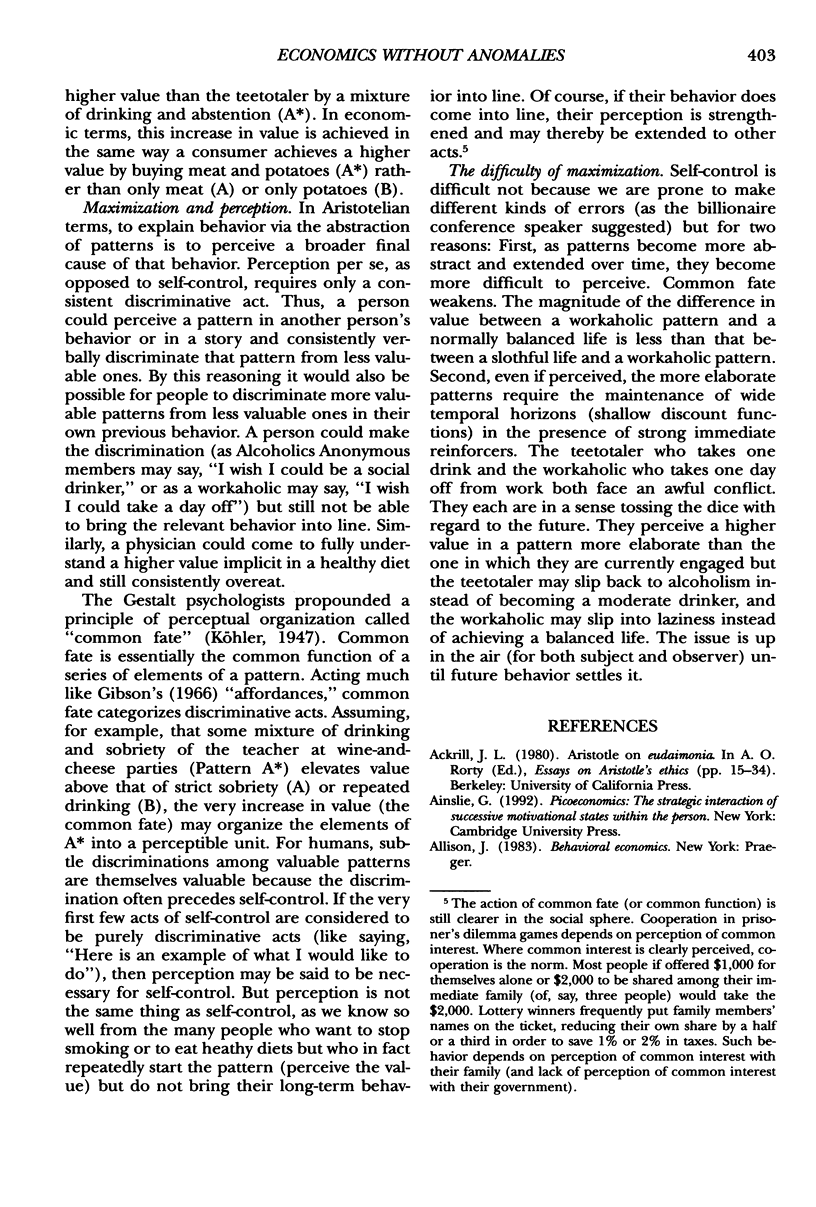
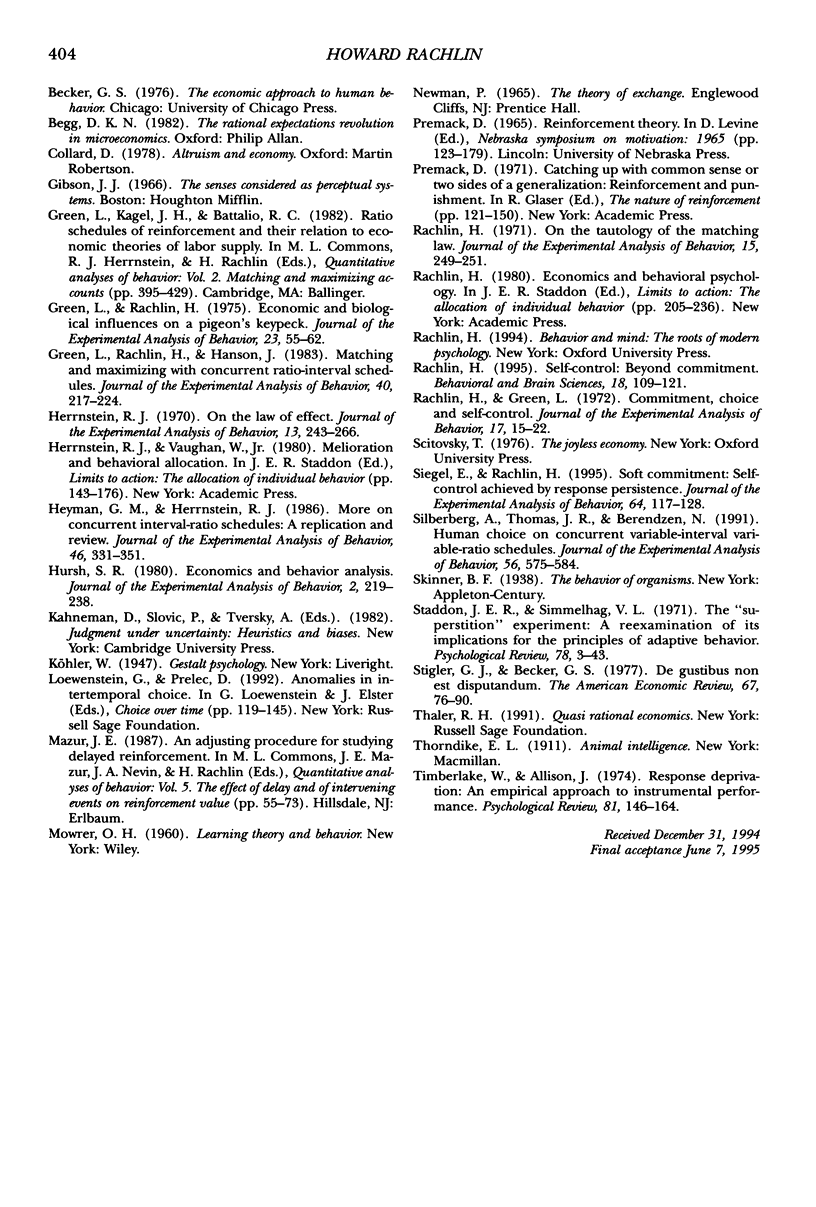
Selected References
These references are in PubMed. This may not be the complete list of references from this article.
- Green L., Rachlin H. Economic and biological influences on a pigeon's key peck. J Exp Anal Behav. 1975 Jan;23(1):55–62. doi: 10.1901/jeab.1975.23-55. [DOI] [PMC free article] [PubMed] [Google Scholar]
- Green L., Rachlin H., Hanson J. Matching and maximizing with concurrent ratio-interval schedules. J Exp Anal Behav. 1983 Nov;40(3):217–224. doi: 10.1901/jeab.1983.40-217. [DOI] [PMC free article] [PubMed] [Google Scholar]
- Herrnstein R. J. On the law of effect. J Exp Anal Behav. 1970 Mar;13(2):243–266. doi: 10.1901/jeab.1970.13-243. [DOI] [PMC free article] [PubMed] [Google Scholar]
- Heyman G. M., Herrnstein R. J. More on concurrent interval-ratio schedules: a replication and review. J Exp Anal Behav. 1986 Nov;46(3):331–351. doi: 10.1901/jeab.1986.46-331. [DOI] [PMC free article] [PubMed] [Google Scholar]
- Hursh S. R. Economic concepts for the analysis of behavior. J Exp Anal Behav. 1980 Sep;34(2):219–238. doi: 10.1901/jeab.1980.34-219. [DOI] [PMC free article] [PubMed] [Google Scholar]
- Rachlin H., Green L. Commitment, choice and self-control. J Exp Anal Behav. 1972 Jan;17(1):15–22. doi: 10.1901/jeab.1972.17-15. [DOI] [PMC free article] [PubMed] [Google Scholar]
- Rachlin H. On the tautology of the matching law. J Exp Anal Behav. 1971 Mar;15(2):249–251. doi: 10.1901/jeab.1971.15-249. [DOI] [PMC free article] [PubMed] [Google Scholar]
- Siegel E., Rachlin H. Soft commitment: self-control achieved by response persistence. J Exp Anal Behav. 1995 Sep;64(2):117–128. doi: 10.1901/jeab.1995.64-117. [DOI] [PMC free article] [PubMed] [Google Scholar]
- Silberberg A., Thomas J. R., Berendzen N. Human choice on concurrent variable-interval variable-ratio schedules. J Exp Anal Behav. 1991 Nov;56(3):575–584. doi: 10.1901/jeab.1991.56-575. [DOI] [PMC free article] [PubMed] [Google Scholar]


